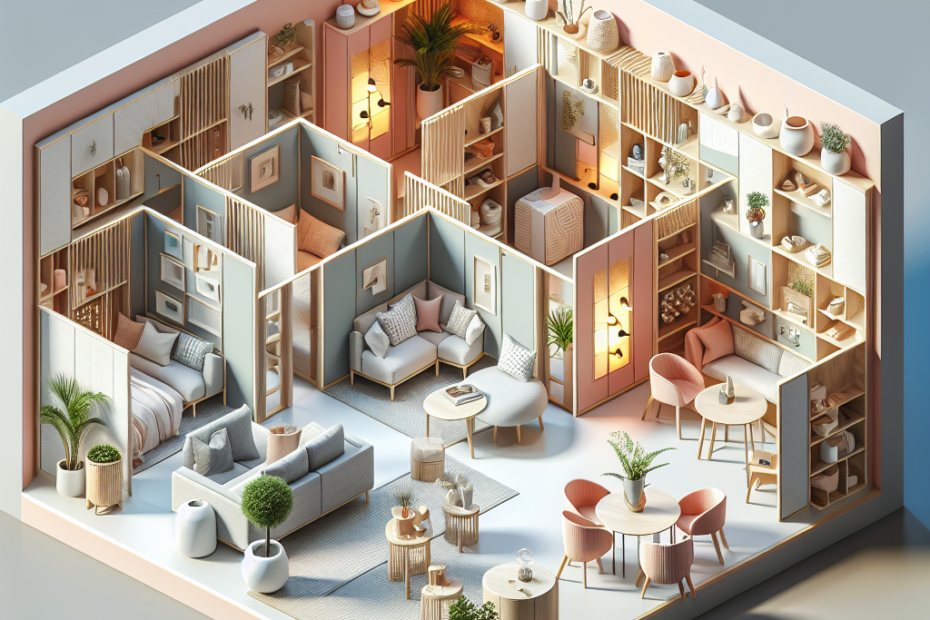“`html
The Best Furniture Layouts for Narrow Rooms
Narrow rooms can often present a challenge when it comes to furniture arrangements, but with careful planning and layout design, they can be transformed into stylish and functional spaces. Whether it’s a living room or a bedroom, determining the best furniture arrangement is key to maximizing every square foot. Research shows that around 68% of homeowners struggle with optimizing narrow spaces (source: Home Design Trends Survey 2022). Therefore, exploring effective layouts can provide solutions that enhance both aesthetics and functionality.
Understanding the Challenges
Narrow rooms often limit how furniture can be arranged. They may leave little space for larger furnishings and often require creativity in design strategy. The main challenge is to maintain a balance between free movement and having enough seating or storage.
Key Layout Strategies
Several strategies can be employed to make narrow rooms spacious and efficient:
- Linear Layout: This approach involves placing furniture along the longest wall, typically seen in narrow living rooms. It opens up the floor space for movement and eases access.
- Multi-functional Furniture: Furniture pieces such as sofa beds, foldable tables, or storage ottomans help save space and serve dual purposes.
- Vertical Storage: Utilizing furniture that expands vertically rather than horizontally takes advantage of the room’s height, leaving the floor area less cluttered.
- Light Colors and Mirrors: Light-colored furniture and mirrors can make narrow spaces feel more open by reflecting light and creating the illusion of additional space.
Furniture Arrangement Tips
For a narrow living room, positioning a small coffee table centrally with a streamlined sofa against the longest wall is efficient. Ensuring that passageways are clear is important to prevent the space from feeling cramped.
In narrow bedrooms, placing the bed against one wall with side tables on either side allows for flow. A tall wardrobe provides necessary storage without taking up valuable floor space.
Consider the Focal Point
Every room should have a focal point, such as a fireplace, television, or a window. Arrange furniture to highlight the focal point, which draws attention away from the room’s narrow dimensions.
Creating Zones
Dividing the room into distinct zones can be beneficial. For instance, a small reading nook with a comfortable chair and a lamp in the corner adds functionality without consuming too much space.
Use of Rugs and Textiles
Rugs can define different areas within a narrow room, making spaces seem larger and more personalized. Coordinating textiles with the room’s color scheme maintains cohesion.
| Layout Type | When to Use | Benefits |
|---|---|---|
| Linear Layout | Narrow living rooms | Maximizes walking space |
| Multi-functional Furniture | Bedrooms and living rooms | Saves space, dual purpose |
| Vertical Storage | Any narrow room | Maximizes storage, frees floor |
Key Takeaways
- Select furniture that fits the scale of the room to avoid overcrowding.
- Consider furniture that can serve multiple purposes to save on space.
- Utilizing light colors and mirrors can enhance the perception of space.
- Focusing on a central point or dividing the space into functional zones can facilitate better usage.
FAQ
- Q: What type of furniture is best for narrow rooms?
A: Opt for multi-functional furniture like sofa beds and fold-out tables, and consider vertical storage solutions. - Q: How can mirrors impact the layout of a narrow room?
A: Mirrors can make a room feel larger by reflecting light and creating an illusion of space. - Q: What is a common mistake in narrow room layouts?
A: Overcrowding with large furniture pieces and lack of clear pathways can make spaces feel cramped. - Q: Are rugs useful in narrow spaces?
A: Yes, they can define different zones within a room, adding warmth and style. - Q: How can color affect narrow room designs?
A: Light colors make spaces feel open and airy, minimizing the narrow feeling.
“`
In this blog post, they’ve explored effective ways to tackle the challenges of narrow room furniture layouts. By carefully selecting furniture, using color wisely, and creating zones, narrow rooms can become practical and visually appealing spaces.
